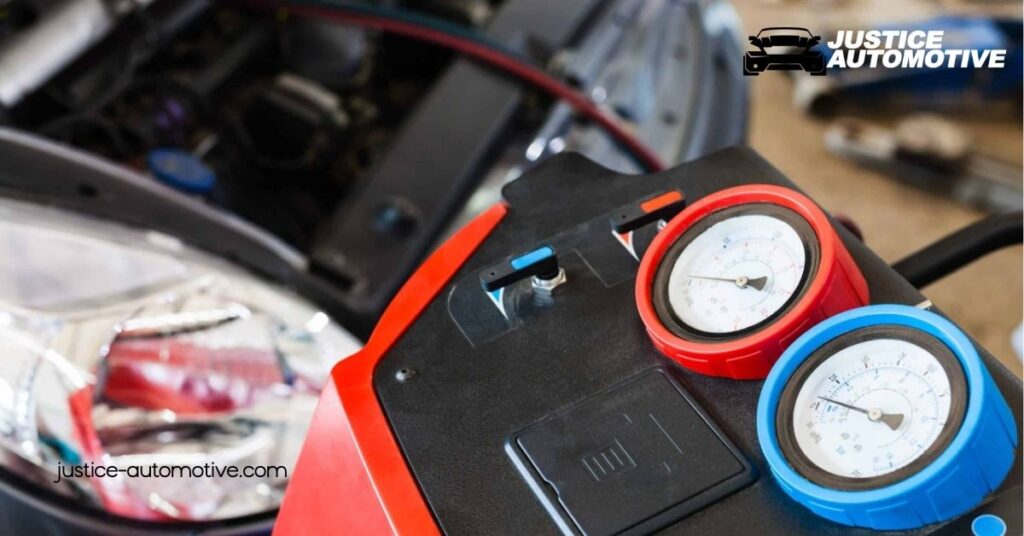Driving in the heat without a properly functioning air conditioning system can turn any road trip into a sweaty nightmare. You rely on your car’s AC to keep you cool and comfortable, but how often should you recharge it to ensure peak performance? Knowing the right frequency can save you from unexpected breakdowns and costly repairs.
Regularly recharging your car’s AC not only enhances your comfort but also extends the life of the system. It’s essential to understand the signs that indicate a recharge is needed and how often you should be doing it. This guide will help you navigate the ins and outs of maintaining your vehicle’s air conditioning, so you can enjoy every drive without the worry of overheating.
Understanding Car AC Systems

Car air conditioning systems play a crucial role in ensuring driver and passenger comfort. Understanding how these systems operate enhances your ability to maintain them effectively.
How Car AC Works
Car air conditioning operates through a closed-loop system that removes heat and humidity from the cabin. A refrigerant fluid absorbs this heat and cycles through various components, including the compressor, condenser, and evaporator. The compressor pressurizes the refrigerant, while the condenser transforms it from gas to liquid, releasing heat. The evaporator then allows the liquid refrigerant to evaporate back into gas, absorbing heat from the air inside the vehicle. As cold air circulates through the cabin, you enjoy a comfortable environment during hot weather.
Importance of Regular Maintenance
Regular maintenance ensures your car’s air conditioning system operates efficiently. Without proper care, refrigerant levels can drop, leading to weak cooling and higher energy use. Scheduled checks help identify any leaks or worn components that could hinder performance. Also, maintaining the system can prevent costly repairs down the road. When you pay attention to your AC system, you extend its lifespan and guarantee reliable performance when you need it most.
Signs Your Car AC Needs Recharge

Recognizing the signs that your car’s AC needs a recharge can enhance your driving comfort. Pay attention to these key indicators.
Decreased Cooling Efficiency
Noticeably reduced airflow from the AC vents suggests a problem. If the air feels warm or fails to cool down, it often indicates low refrigerant levels. The AC may struggle to maintain desired temperatures, especially during hot weather. Regularly monitoring the cooling performance can help identify issues early on.
Unusual Noises or Smells
Listen for unusual noises when the AC is in operation. A hissing or bubbling sound typically points to refrigerant leaks, while a clicking noise may signal a faulty component. Also, pay attention to any strange odors. A musty smell could indicate mold growth, whereas a chemical scent often hints at refrigerant leakage. Addressing these signs promptly can prevent further damage to the AC system.
How Often to Recharge AC in Car
Recharging your car’s air conditioning system is crucial for optimal performance. Timely recharges help maintain comfort, especially during hot weather.
General Recommendations
Most manufacturers recommend recharging your AC system every 1 to 2 years to keep it running efficiently and avoid gradual refrigerant loss. Some experts suggest extending this interval to every two to three years, depending on your vehicle and its usage conditions. Following these guidelines ensures that your air conditioning remains effective and reliable.
Factors Affecting Recharge Frequency
Various factors influence how often you should recharge your AC system. Climate plays a important role; hot environments demand more frequent recharges due to increased cooling requirements. Also, your driving habits matter. Frequent use or long trips lead to quicker refrigerant depletion. On the other hand, minimal use in milder conditions may extend the time between necessary recharges. Understanding these factors helps you make informed decisions about your vehicle’s AC maintenance.
DIY Recharge vs. Professional Service

Choosing between a DIY recharge and professional service for your car’s AC system impacts performance and costs. Understanding the pros and cons helps in making an well-informed choice.
Pros and Cons of Each Method
DIY Recharge Advantages: You benefit from potential short-term cost savings. Many DIY kits are readily available at auto parts stores. Convenience plays a important role, as you can recharge at your own pace without scheduling a service appointment.
DIY Recharge Drawbacks: Risks include improper handling of refrigerants. You might not detect underlying issues that require professional assessment. Mistakes can lead to further damage, resulting in more expensive repairs down the line.
Professional Service Advantages: Technicians possess expertise and can identify hidden problems. A meticulous evaluation of your entire AC system ensures optimal performance. They also use specialized equipment that provides a more thorough recharge.
Professional Service Drawbacks: Costs can vary and sometimes lead to higher expenses. Also, scheduling and travel time might be inconvenient, particularly for quick fixes.
Tools and Equipment for DIY
For a successful DIY recharge, you’ll need several essential tools. A refrigerant recharge kit is crucial. Look for kits specifically designed for your vehicle model.
An AC gauge set ensures accurate pressure readings during the process. You might also require safety gear, such as gloves and goggles, to protect yourself from refrigerants.
Follow the manufacturer’s instructions carefully for the best results. Familiarize yourself with all tools and equipment to avoid errors during recharging. Have a clean workspace to make the process efficient and safe.
Conclusion
Regularly recharging your car’s AC is essential for maintaining comfort and performance. By keeping an eye on the signs that indicate a recharge is needed and understanding the recommended intervals, you can prevent costly repairs and extend the lifespan of your system.
Whether you choose to tackle the recharge yourself or seek professional help, staying proactive will ensure your air conditioning remains efficient. Remember that a well-maintained AC system not only enhances your driving experience but also contributes to a more enjoyable ride in hot weather. Take the time to care for your AC, and you’ll reap the benefits for years to come.
Frequently Asked Questions

How often should I recharge my car’s AC system?
Most manufacturers recommend recharging your car’s AC every 1 to 2 years. Some experts suggest extending this interval to every 2 to 3 years, depending on vehicle usage and climate. Factors like hot weather and frequent use may necessitate more regular recharges.
What are the signs that my car’s AC needs a recharge?
Signs your AC needs a recharge include decreased cooling efficiency, unusual noises (like hissing or bubbling), and strange odors (such as musty or chemical smells). A noticeable reduction in airflow or warm air from vents may also indicate low refrigerant levels.
Can I recharge my car’s AC myself?
Yes, you can recharge your car’s AC yourself, but it requires proper tools and safety precautions. While DIY recharges can save money, they pose risks such as improper refrigerant handling and potentially overlooking underlying problems.
What are the components of a car’s AC system?
The main components of a car’s AC system include the compressor, condenser, evaporator, and expansion valve. Together, they work in a closed-loop process to remove heat and humidity, providing a comfortable environment inside the vehicle.
Why is regular maintenance of my car’s AC important?
Regular maintenance helps maintain refrigerant levels, prevents weak cooling, and allows early identification of potential issues that could lead to costly repairs. Consistent care extends the lifespan of your AC system and ensures optimal performance.

